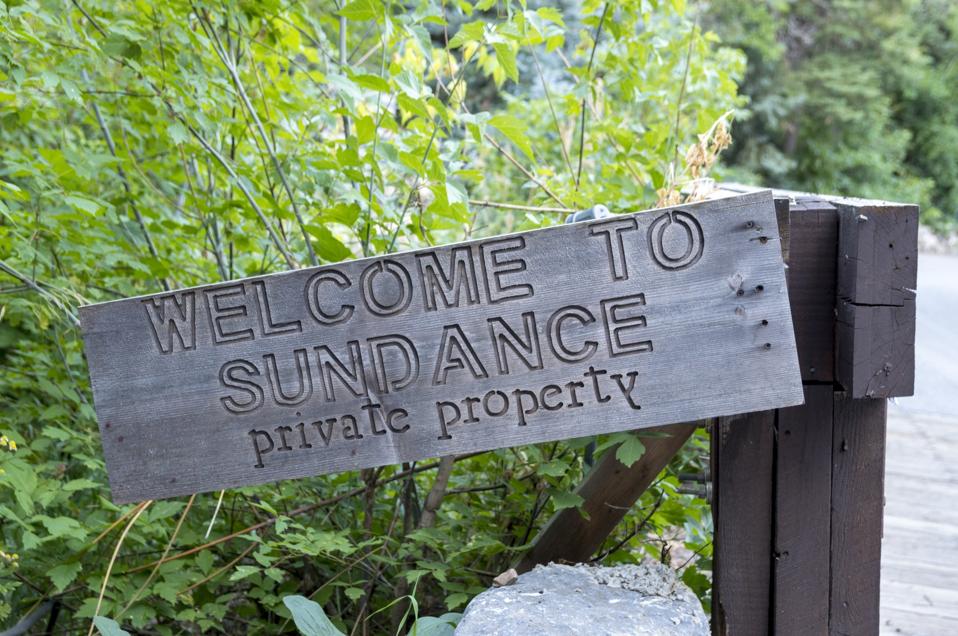For some, Robert Redford will always be the Sundance Kid. Others think first of ‘Ordinary People,’ while I remember him most as the Horse Whisperer.
Yet beyond his film career, Redford built an equally powerful legacy in environmental activism. His more than five decades of advocacy earned him numerous accolades, including the Presidential Medal of Freedom in 2016, the nation’s highest civilian honor.
Former President Barack Obama, who presented him with the award, shared the moment again on social media yesterday.
His Legacy At Sundance
His activism began in 1969, when Robert Redford decided to purchase land in Utah’s Provo Canyon to protect it from overdevelopment. He renamed it Sundance and set the area on an entirely different path.
The mountain community, which was little more than a one-lift ski hill known as Timp Haven, became synonymous with independent film and a pioneering model of sustainable tourism under Redford’s stewardship.
In a 2015 interview with Time Magazine, Redford recalled how Sundance began with a modest land purchase when he bought only a couple of acres from a local sheepherder for $500.
But as he watched how bulldozers and cranes descended upon Utah, reshaping its cultural landscape into unchecked growth, he decided to acquire more land to protect it. He believed that safeguarding the canyon would become his most enduring legacy. Now, Sundance protects 3,343 acres of land.
“As stewards of this unique place, it has always been my vision that the Sundance Mountain Resort would be a place where art, nature and recreation come together to make the world a better place – now and in the future,” said Robert Redford in 2020 when he announced the sale of Sundance Mountain Resort.
The Resort That Redford Built, And What It Stands For Today
“With his generous spirit, kind nature, and artistic vision, Bob created something no one else could have built,” said Chad Linebaugh, president and general manager of Sundance Mountain Resort in an official statement following his passing on September 16.
“Always looking ahead, his commitment to this canyon was a calling that went beyond love. The Sundance brand he built – rooted in this place – has touched so many lives and will continue to benefit generations who love this preserved land,” Linebaugh added.
Sundance Resort has built its operations around the philosophy that “develop very little and preserve a great deal.” It was and still is the guiding principle that originated from Redford.
The Resort emphasizes green lodging practices such as non-toxic cleaning supplies, linen reuse to conserve water and energy, and no bottled water in lodging units. It sources water from local mountain-fed springs.
Sundance has its own glassworks kiln to recycle glass into decorative and functional art.
When it comes to remodeling or new construction like the Inn at Sundance Mountain Resort that set to open this winter the Resort tries to minimize its footprint by using local or reclaimed materials (so limiting tree removal), energy-saving lighting and heating and geothermal systems.
The resort’s restoration efforts include annual projects to manage invasive weeds, reestablish native vegetation and prevent erosion.
“Bob will always be our founder, but his ideals and vision to develop only a little and preserve a great deal are how we continue to make decisions as a company,” said the spokesperson of Sundance Mountain Resort.
Sundance Mountain Resort has created a memorial in the Resort Village at the Rehearsal Hall Pond, where guests and fans of Robert Redford are invited to pay their respects.
Environmental Stewardship Beyond The Resort
Robert Redford and his family partnered with Utah Open Lands in 1997 and 2020 to permanently protect untouched habitats around Sundance.
In 1997, the Redford family set out to safeguard Provo Canyon’s natural heritage by creating the Redford Family Nature and Wildlife Preserve.
The preserve permanently protects 835 acres of critical open space, ensuring that forests, meadows, and wildlife corridors above Sundance in Northfork Canyon remain intact for future generations.
In 2020, the Redford family donated over 300 acres of land to form Redford Family Elk Meadows Preserve at the base of Mount Timpanogos.
The preserve now safeguards the meadow below the iconic Stewart Falls as well as popular hiking and cross-country ski trails around it.
Cinematic Storytelling As A Catalyst For Real-World Conservation
In 2005, Robert Redford and his son James Redford founded The Redford Center, a U.S.-based nonprofit to use film and storytelling as tools to advance environmental awareness, inspire solutions, and support environmental justice.
Over its lifetime, The Redford Center has supported 150+ films and campaigns. One of the most impactful films was ‘Watershed’ (2012), an award-winning documentary that spotlighted the plight of the Colorado River Delta.
The film helped spark the creation of Raise the River, a binational coalition of U.S. and Mexican nonprofits working to restore the river’s fragile ecosystem. Since its inception in 2012, the coalition has restored more than 1,000 acres of wetlands, planted over 230,000 trees, and raised more than $10 million for conservation.
It is responsible for securing one-third of the water dedicated to restoration that directly translates into revived ecosystems, healthier wildlife populations and renewed cultural connections for people who live along the Colorado River.
Redford’s work reminds us that legacies aren’t only about what is built, but also about what is preserved. Climate change and economic growth continue to threaten our natural and cultural heritage from the oceans up to Mount Everest. However, his vision should offers a clear path forward to find balance through stewardship, and respect for the places that sustain us.

